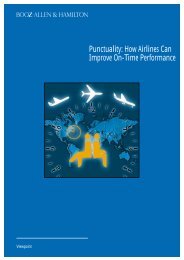The sentence
The sentence
The sentence
You also want an ePaper? Increase the reach of your titles
YUMPU automatically turns print PDFs into web optimized ePapers that Google loves.
E. Particular prepositions, particle: contrasts (3)<br />
Prepositions, particles, etc. often confused and misused<br />
1. of, out of, from and with after made<br />
We use made of and made out of when we can actually recognize the material(s): made of<br />
wood, iron, etc. We use made from when the ingredients are not immediately obvious: a<br />
cake made from eggs, milk and flour. We use made with (= contains) to identify one or<br />
more of the ingredients: <strong>The</strong>se chocolates are made with fresh cream.<br />
2. of and off<br />
We never use of and off in place of each other. We always use a noun or pronoun object<br />
after of: north of the river, a woman of 50. We can use an object after off, or we can<br />
use it on its own to suggest separation: just of the motorway, take the top off.<br />
3. on and in<br />
We often use both of these to refer to the body. On refers to surface: on your nose.<br />
In suggests ‘deep’: a speck in my eye, or refers to pain: a pain in my stomach.<br />
4. out of and outside<br />
Out of is the opposite of into when we are describing movement: We ran out of the<br />
building.<br />
In this sense, we can’t replace out of by outside. Compare uses without movement:<br />
He is out of his office. (= not here) He is outside the office. (= waiting)<br />
5. over, above and on top of<br />
Over (= covering, sometimes touching): Keep the blankets over you. above (= at a higher<br />
level and not touching): a light above my head. On top of (= touching): on top of the TV.<br />
We can use over and above in place of each other to mean ‘vertically at a higher level’:<br />
a helicopter over/above a lifeboat. We cannot use over and above in place of each other<br />
when all we are concerned with is ‘a higher level’ (not vertical). If, for example, we were<br />
referring to two cats on a tree we would say that A was above B, not over it.<br />
We also use both words to refer to rank, etc.: over/above the rank of colonel.<br />
6. under, underneath and below<br />
Under (= covered by, sometimes touching); underneath (= completely covered by):<br />
a mat under/underneath a hot dish. Below is the opposite of above and we can use it in<br />
place of under/underneath,. Below (Not *under*) refers to position (below the knee).<br />
7. with and without<br />
We use with and without to mean ‘accompanied by’ or ‘not accompanied by’:<br />
with/without my sister. With can suggest ‘having’: with your hands in your pockets, and<br />
‘taking into consideration’: with the high cost of living. With follows common adjectives<br />
(e.g. angry) and we use it in expressions like blue with cold. Without + -ing can suggest<br />
‘and not do something’:<br />
Go into the room without waking the children.<br />
51




